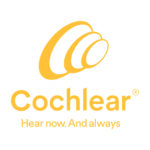A passive implant means that no working parts are contained in the implant. The working part, the vibrating transducer, is encased together with the sound processor in one unit which is worn externally on the head behind the ear. The surgical part is most often a titanium abutment, which protrudes through the skin, or occasionally a magnet, which is placed under the skin.
The abutment is inserted surgically through the skin and a few millimetres into the bone.
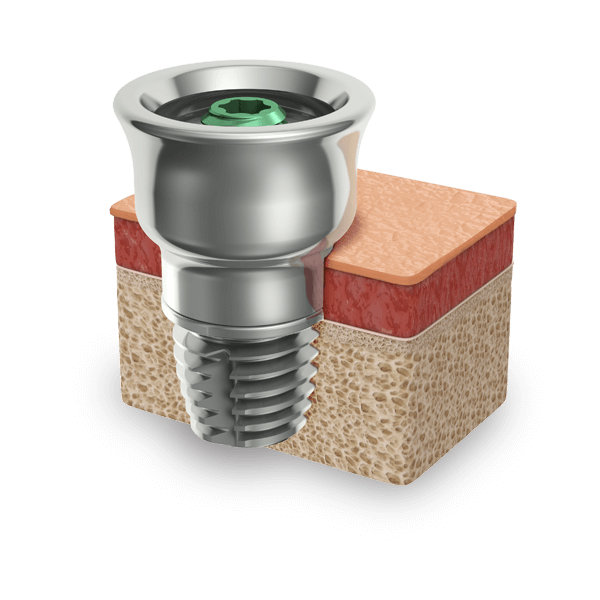
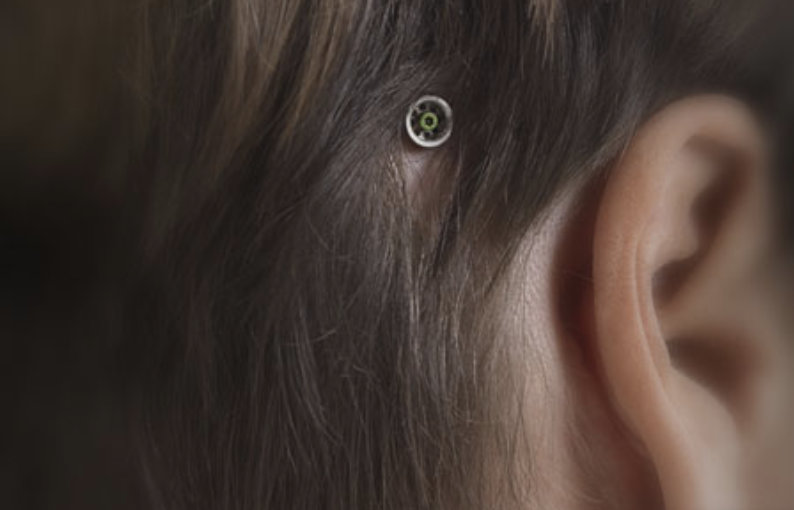
At Bradford Royal Infirmary the passive implantable devices we provide are:
Cochlear™ Baha® System
The Cochlear™ Baha® System consists of three different devices:
- Cochlear™ Baha® 6 Max
- Cochlear™ Baha® 7
- Cochlear™ Baha® 5 SuperPower
The device chosen for a patient depends on the severity of their hearing loss.

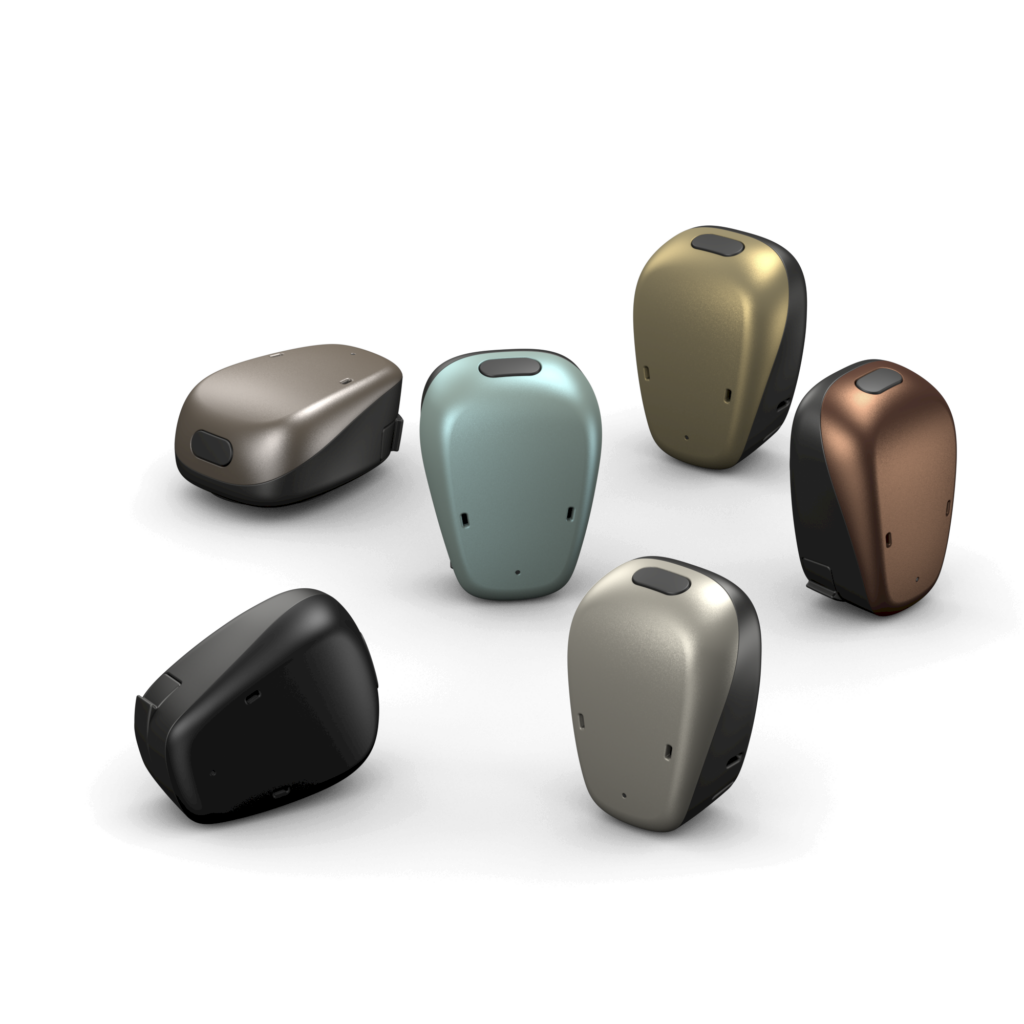
The Baha® 6 Max can be worn on an abutment, on a magnet, or on a temporary wear option including a Cochlear™ Baha® SoundArc™, and softband. Each device is available in a range of colours to suit different hair types.
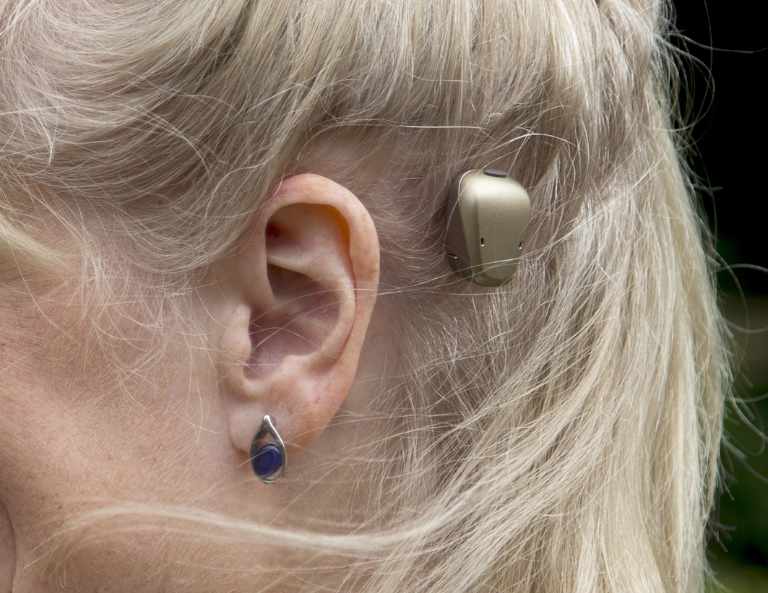
Surgery for abutments (Baha® connect) or magnets (Baha® attract) is available from the age of 5 years old.
Anyone from infants to adults can be fitted with a softband.
A SoundArc® is made of harder material, so are often not as comfortable to wear for very young children.
For more information about Cochlear bone conduction devices please visit the Cochlear website by clicking this link:
Oticon Medical Ponto
For a mild hearing loss, we can fit the Ponto 5 Mini.

The Ponto 5 is available in a range of shades to blend in with different hair colours. (Image courtesy of Oticon Medical)
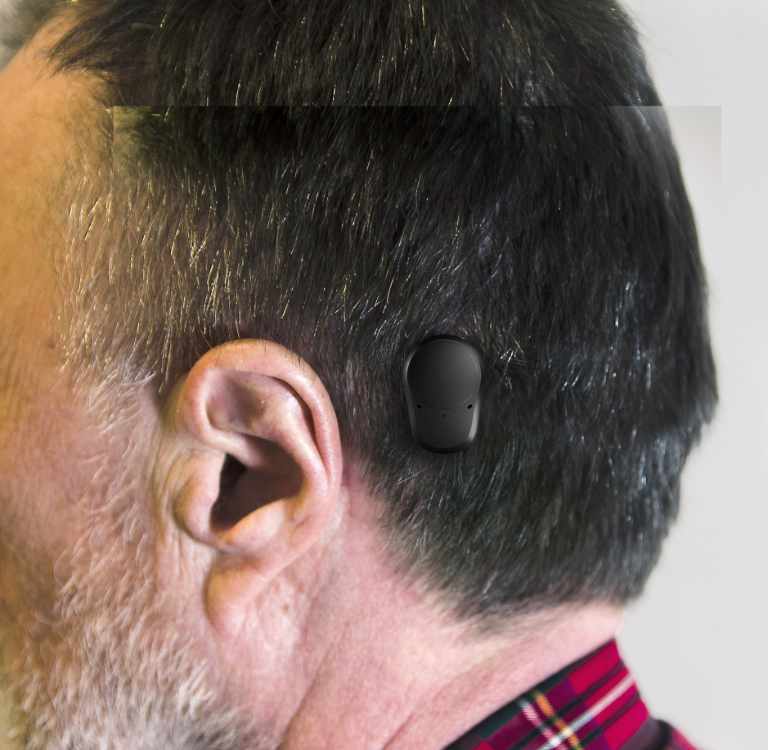
Here you can see the size of a black Ponto 4 worn clipped on to an abutment behind the ear. (Image courtesy of Oticon Medical).
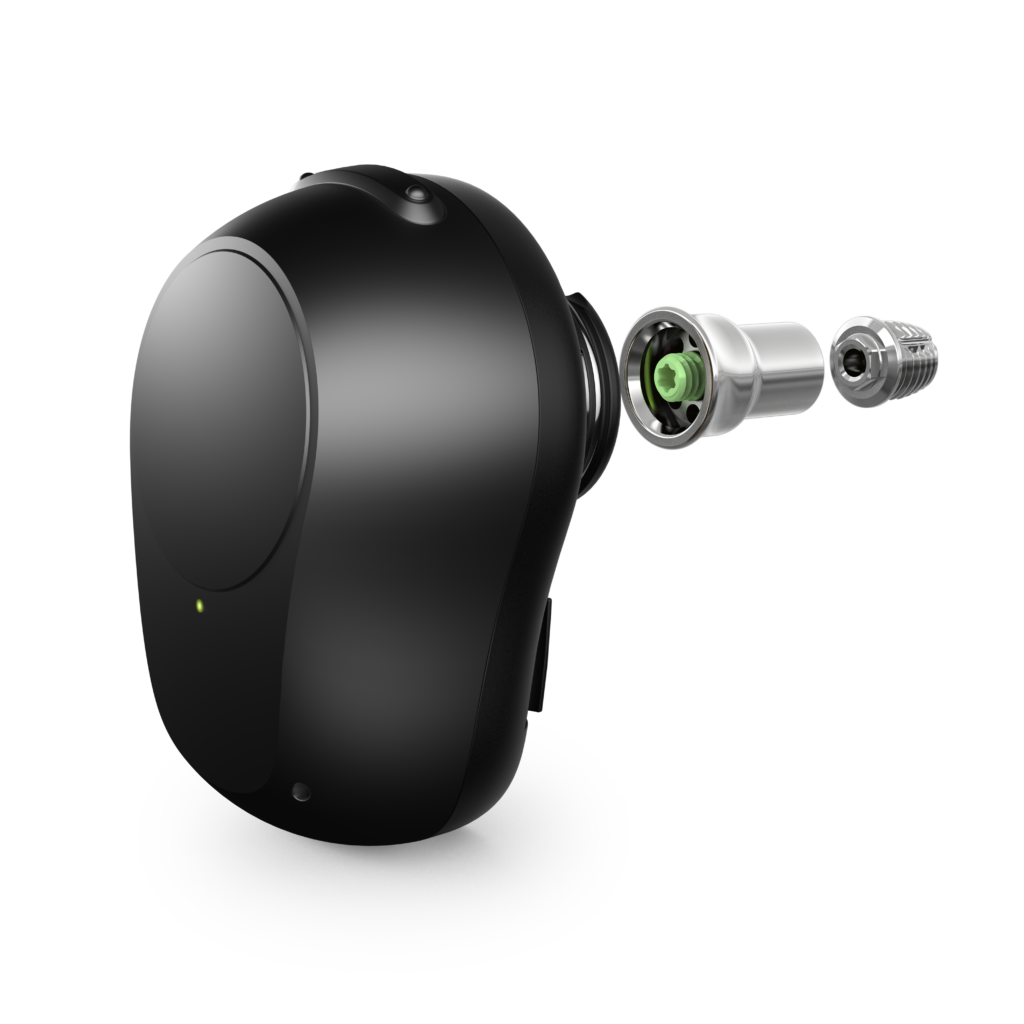
For a moderate hearing loss, we fit the Ponto 5 SuperPower, which is also available in a range of colours as above, and is larger than the Ponto 5 mini. This image shows a Ponto 5 SuperPower in black, along with the abutment and fixture which are the implantable parts of the system. (Image courtesy of Oticon Medical).
An Oticon Ponto device can be worn on an abutment. Surgery for an abutment is possible for patients aged 5 years and older.
They can also be worn on a non-permanent fitting, using either a softband or a metal headband. A softband can be worn from infancy, a headband is usually only used for older children and adults.
For more information about the Oticon Ponto ranges, please see the Oticon Medical website by following this link:
MED-EL ADHEAR
The ADHEAR from MED-EL is worn on an adhesive patch. The patch is designed to be worn on the skin behind the ear, and to stay in place for up to 5 days. It is suitable to be worn whilst showering and bathing – without the BCHD attached!
This is only suitable for patients with a mild hearing loss, or for single-sided deafness.
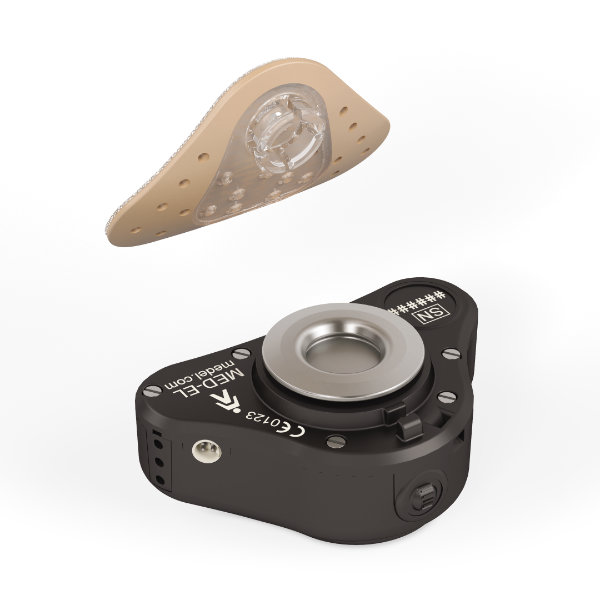
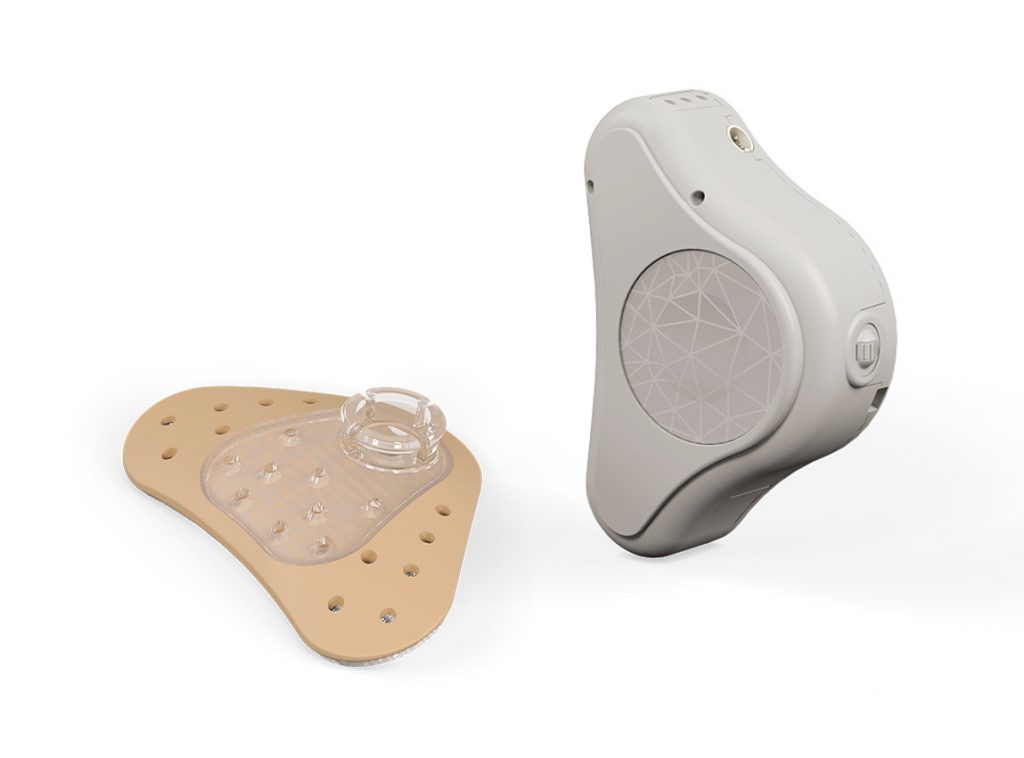
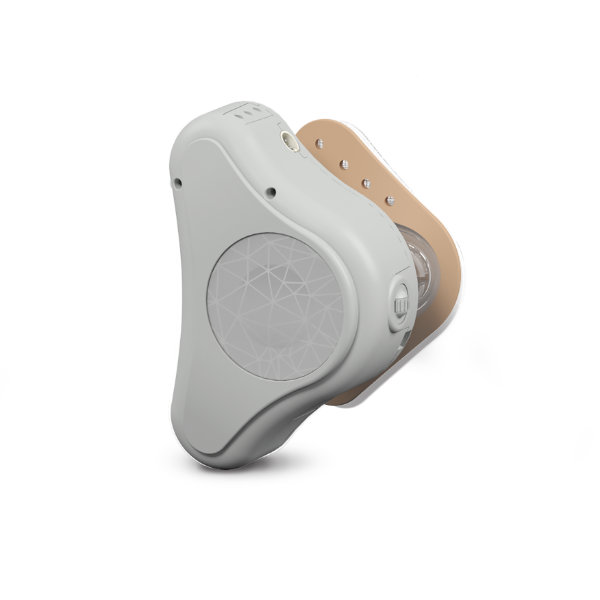
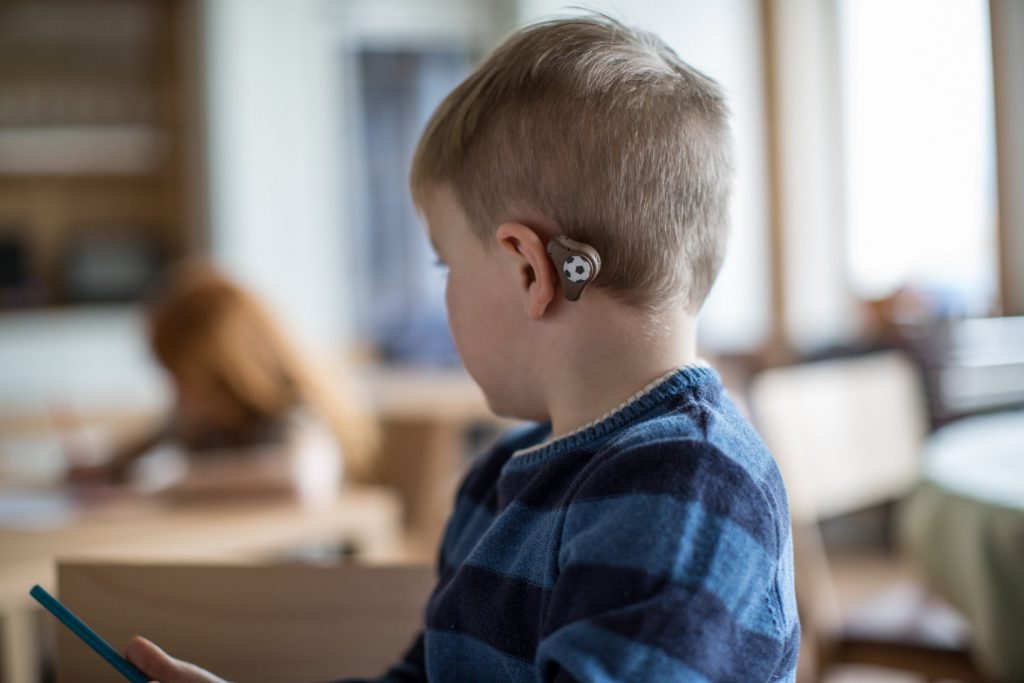
For more information about the ADHEAR, please see the MED-EL website by following this link:
